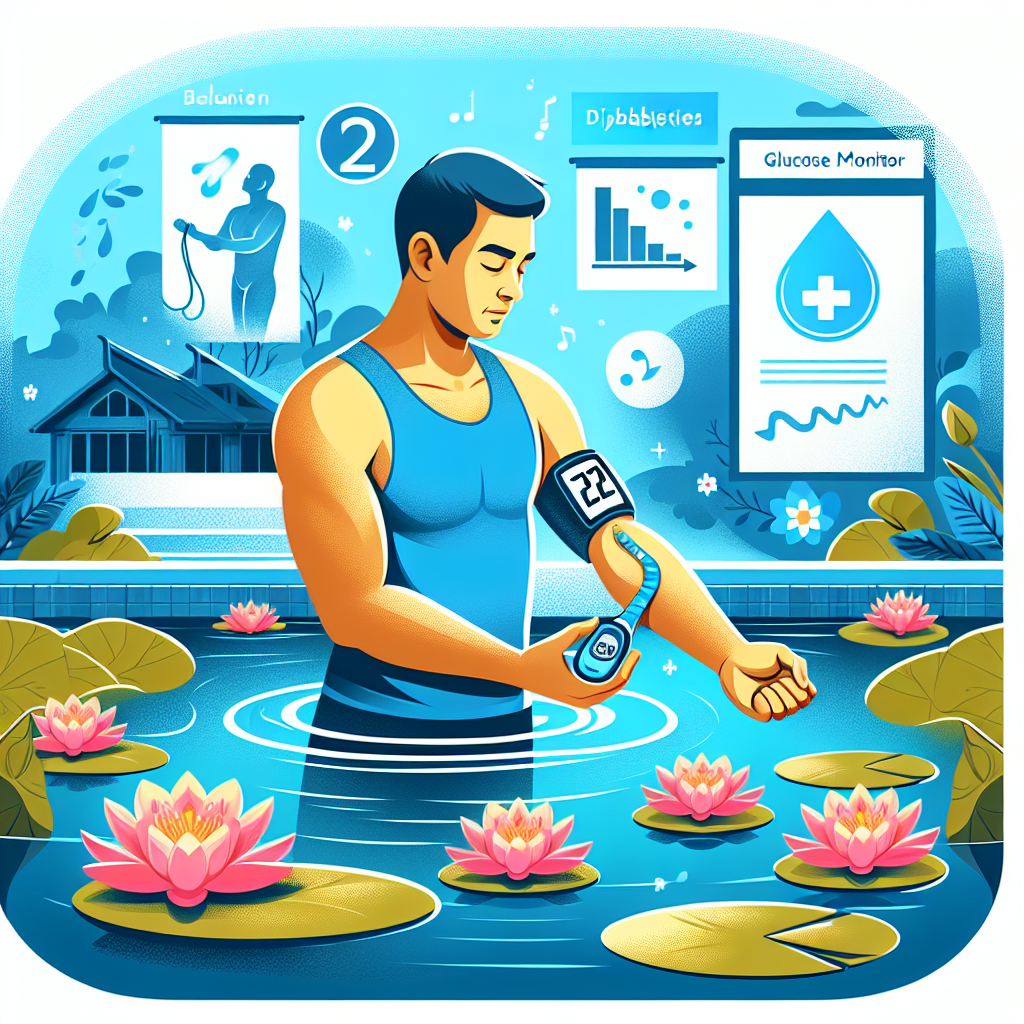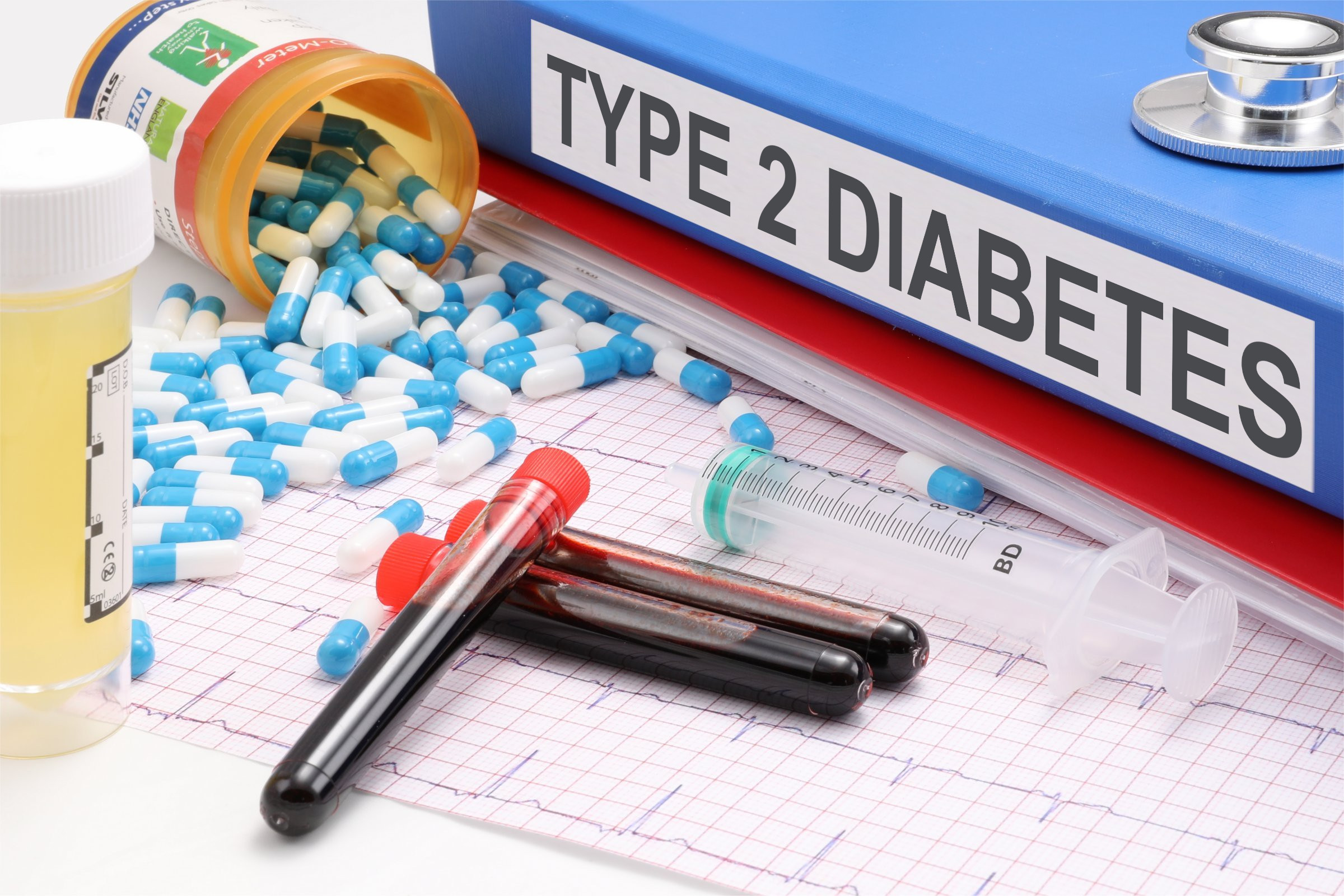
-
Hydrotherapy can improve blood glucose levels in Type 2 diabetes patients.
-
Regular warm water therapy may assist in weight management and reduce body fat percentage.
-
Increased circulation from hydrotherapy can potentially alleviate symptoms of diabetic neuropathy.
-
Water-based exercises offer a safe alternative for those who have difficulty with traditional exercise.
-
Consulting with a healthcare provider is crucial before beginning any hydrotherapy regimen.
The Role of Hydrotherapy in Type 2 Diabetes Management

For those managing Type 2 diabetes, finding effective and safe ways to control blood sugar and maintain overall health is a constant pursuit. One avenue that is gaining attention is hydrotherapy, a method that uses water to promote health and heal the body. This isn’t a new concept; for centuries, water has been used for its therapeutic properties. Now, it’s time to dive into how it specifically benefits those with Type 2 diabetes.
Understanding Hydrotherapy and Its Principles
So, what exactly is hydrotherapy? In simple terms, it’s the use of water in any form—ice, steam, or liquid—for health treatments. The temperature and pressure of the water are adjusted to stimulate blood circulation and treat symptoms of various conditions. For diabetics, the soothing properties of warm water can be particularly beneficial, helping not just with blood sugar levels, but also providing a sense of relaxation and well-being.
Link Between Warm Water Therapy and Blood Glucose Levels
Research has pointed to the potential for warm water therapy to lower blood sugar levels. A study published in the New England Journal of Medicine found that participants who submerged in a hot tub for 30 minutes a day, six days a week, experienced a noticeable reduction in blood glucose levels. The heat exposure may help diminish blood sugar by improving blood flow and mimicking the effects of exercise.
Most importantly, the implications of these findings are significant because they suggest an accessible option for blood sugar management that can complement dietary and medicinal strategies.
Non-exercise Activity and Caloric Expenditure
Exercise is a cornerstone of diabetes management, but not everyone is able to engage in traditional physical activities due to various health issues. Hydrotherapy emerges as a gentle yet effective alternative. The resistance of water provides a low-impact form of exercise that can help burn calories without the strain on joints that comes with typical workouts.
Effectiveness of Hydrotherapy for Reducing Body Fat Percentage

Hydrotherapy doesn’t just impact blood glucose levels; it can also be a valuable tool in the fight against obesity, which often goes hand-in-hand with Type 2 diabetes. The buoyancy of water makes it easier for those with weight concerns to move and perform exercises that might be too difficult on land. Moreover, the thermal effect of warm water helps to increase metabolism, potentially aiding in weight loss. This combination of increased physical activity and metabolism can contribute to a reduction in body fat percentage, making hydrotherapy a powerful ally in weight management.
Enhancing Circulation With Hydrotherapy
Good circulation is vital for everyone, but for people with Type 2 diabetes, it’s even more crucial. Diabetes can lead to poor blood flow, particularly in the extremities, which in turn can cause a host of other health issues. Hydrotherapy, with its warm water and massaging jets, can stimulate blood flow throughout the body. This improved circulation can help deliver oxygen and nutrients to tissues and organs, which may help in the overall management of diabetes.
Boosting Peripheral Blood Flow in Diabetic Patients
One of the specific circulation-related challenges for those with diabetes is peripheral vascular disease, which can lead to painful and dangerous conditions like diabetic neuropathy. Hydrotherapy can target these areas by dilating blood vessels and enhancing blood flow to the peripheral tissues. This not only nourishes the affected areas but also can help in reducing pain and improving mobility for those suffering from neuropathy.
Combating Diabetic Neuropathy With Water-based Exercises
Water-based exercises are particularly beneficial for those dealing with diabetic neuropathy. The water provides a safe environment where balance issues, often a symptom of neuropathy, are less of a concern. Gentle exercises, like walking in water or using water weights, can help maintain muscle strength and joint flexibility without the risk of injury that might come with similar land-based activities.
Improving Skin Health for Diabetics Type 2 With Hydrotherapy
Diabetes can take a toll on skin health, leading to a range of issues from dryness to infections. Hydrotherapy can be part of a skincare regimen for diabetics, as the hydration from the water can help improve skin elasticity and moisture. Additionally, the cleansing action of the water can help remove bacteria from the skin’s surface, reducing the risk of infections that diabetics are often prone to.
For example, a patient with Type 2 diabetes and chronic dry skin started a routine of gentle hydrotherapy sessions. After a few weeks, not only did they report feeling more relaxed and having better blood sugar levels, but they also noticed a significant improvement in the condition of their skin.
This anecdote illustrates the multi-faceted benefits that hydrotherapy can offer beyond just blood sugar management.
However, it’s not just about soaking in water. The key is to combine hydrotherapy with other skincare practices like proper moisturization and the use of mild, non-irritating cleansers to maximize the benefits for diabetic skin health.
Moreover, the psychological impact of feeling better about one’s skin should not be underestimated. Improved self-esteem and reduced stress can have a positive effect on overall diabetes management.
Hydration and Skin Elasticity: The Role of Hydrotherapy
Staying well-hydrated is essential for maintaining skin elasticity, and hydrotherapy can play a role here. By immersing in water, the skin can absorb moisture, which may help in keeping it supple and resilient. This is especially important for diabetics, who often struggle with skin issues due to their condition. When combined with a balanced diet rich in vitamins and minerals, hydrotherapy can help maintain healthy skin from the inside out.
Additionally, the warm water can open pores and cleanse the skin, removing dead skin cells and promoting new cell growth, which is vital for maintaining a healthy skin barrier.
Addressing Diabetic Skin Conditions Through Hydrotherapy
Diabetics are at an increased risk for various skin conditions, including bacterial and fungal infections. Hydrotherapy can help address these issues by improving circulation and hydration, which are essential for skin health and healing. It’s important to note that the water used in hydrotherapy should be clean and properly treated to prevent any adverse effects, such as infections.
Customizing a Hydrotherapy Routine for Diabetic Patients
When it comes to hydrotherapy, there’s no one-size-fits-all approach. Each individual’s routine should be tailored to their specific needs, taking into account their blood sugar levels, physical abilities, and overall health. This is where consultation with a healthcare provider becomes essential. They can help determine the appropriate temperature, duration, and frequency of hydrotherapy sessions to ensure safety and effectiveness.
Identifying the Right Temperature and Duration for Diabetes Care
Finding the right balance of temperature and duration for hydrotherapy sessions is crucial. Water that’s too hot can pose a risk, especially for diabetics who may have reduced sensitivity due to neuropathy. On the other hand, water that’s not warm enough may not provide the therapeutic benefits needed. A healthcare provider can help find that sweet spot, usually between 92°F to 100°F, for sessions lasting around 15 to 30 minutes.
At-Home Hydrotherapy Solutions and Accessibility
Hydrotherapy doesn’t necessarily require a trip to a spa or clinic. With the right equipment, it can be done at home, making it a convenient option for regular use. Portable whirlpool devices can turn a standard bathtub into a therapeutic space. Walk-in tubs with built-in jets are another option for those with mobility issues. The key is ensuring the setup is safe, accessible, and fits the individual’s needs.
Remember, while hydrotherapy can be a valuable component of diabetes management, it’s important to maintain a comprehensive care plan that includes proper diet, regular exercise, and medication as prescribed by a healthcare professional.
FAQ
As we explore hydrotherapy as a treatment for Type 2 diabetes, questions naturally arise. Let’s address some of the most common inquiries to ensure that you can approach hydrotherapy with confidence and knowledge.
1. How often should a diabetic patient undergo hydrotherapy?
The frequency of hydrotherapy sessions can vary depending on individual health needs and the advice of your healthcare provider. Generally, starting with two to three times a week can help you gauge how your body responds. Monitoring blood sugar levels before and after sessions is crucial to see the therapy’s effects. Always consult with your healthcare provider to create a schedule that’s safe and effective for you.
2. Can hydrotherapy replace traditional exercises for diabetics?
While hydrotherapy can be a valuable addition to a diabetes management plan, it should not completely replace traditional exercise. It can serve as a supplementary activity, especially for those who may have limitations that prevent them from engaging in more strenuous forms of exercise. Balance hydrotherapy with other forms of physical activity, as advised by your healthcare provider, to maintain optimal health.
Traditional exercises like walking, cycling, and resistance training have their own set of benefits, such as improving insulin sensitivity and cardiovascular health. Therefore, combining these with hydrotherapy can provide a more comprehensive approach to managing diabetes.
-
Always start with a warm-up, even in the water, to prepare your muscles.
-
Engage in a variety of exercises to target different muscle groups.
-
Include a cool-down period after hydrotherapy to gradually lower your heart rate.
3. Are there any risks associated with hydrotherapy for diabetes type 2?
Hydrotherapy is generally safe for most people with diabetes, but there are some risks to be aware of. For instance, those with neuropathy may not be able to feel the heat of the water, which can lead to burns. Additionally, open wounds or sores should not be exposed to communal water sources due to the risk of infection. It’s important to discuss any potential risks with your healthcare provider before starting hydrotherapy.
Another consideration is the potential for dehydration or hypoglycemia during or after prolonged sessions in hot water. Ensure you stay hydrated and have a snack on hand if you’re prone to low blood sugar levels.
-
Check water temperature with a thermometer or have someone verify it for you.
-
Keep hydrated by drinking water before and after hydrotherapy sessions.
-
Monitor your blood sugar levels closely to avoid hypoglycemia.
By taking these precautions, you can minimize risks and enjoy the benefits of hydrotherapy safely.
4. What is the cost of hydrotherapy treatment for diabetes?
The cost of hydrotherapy can vary widely depending on the type of treatment and where it’s performed. At-home treatments like warm baths are generally low-cost, requiring only the price of water and any bath additives you might use. Professional treatments at spas or clinics can be more expensive, ranging anywhere from $50 to $200 per session. Some health insurance plans may cover hydrotherapy if it’s prescribed by a doctor, so be sure to check with your provider.
5. How can I measure the effectiveness of hydrotherapy for my diabetes type 2 management?
To measure the effectiveness of hydrotherapy, keep a detailed log of your blood sugar levels, noting any changes that occur after your sessions. Also, track your weight, body fat percentage, and any symptoms of conditions like neuropathy. Pay attention to how you feel overall—increased energy levels and improved mood can be indicators of hydrotherapy’s positive impact. Lastly, regular check-ups with your healthcare provider can provide a professional assessment of your diabetes management and the role hydrotherapy is playing in it.
Remember, the benefits of hydrotherapy may take time to become evident. Patience and consistency are key, as is a holistic approach to diabetes care that includes diet, exercise, medication, and regular medical check-ups.
Overall, hydrotherapy offers a soothing, beneficial option for managing Type 2 diabetes. When used thoughtfully and under the guidance of a healthcare provider, it can enhance your quality of life and contribute to better diabetes control. So, why not take the plunge and see how hydrotherapy can help you navigate the waters of diabetes management?


